
Each major tech shift brings new opportunities for startups to build products that can change our lives.
 Listen to this article >
Listen to this article >
But how and when you develop your product during a platform transition can be the difference between it becoming an iconic product that defines a generation – or a relic of the hype cycle, disappearing as quickly as it came.
For startups in search of a wedge to build enduring consumer products during the current AI transition, it’s helpful to understand the phases of technological evolution. While the far-reaching impact of AI will be on par with the first internet revolution, the manner by which we actually incorporate the technology into our lives may look much more like the mobile transition. Drawing on parallels from the mobile age, we can see that products launched during shifts often end up falling into one of three categories: ports, toys, and transformations.
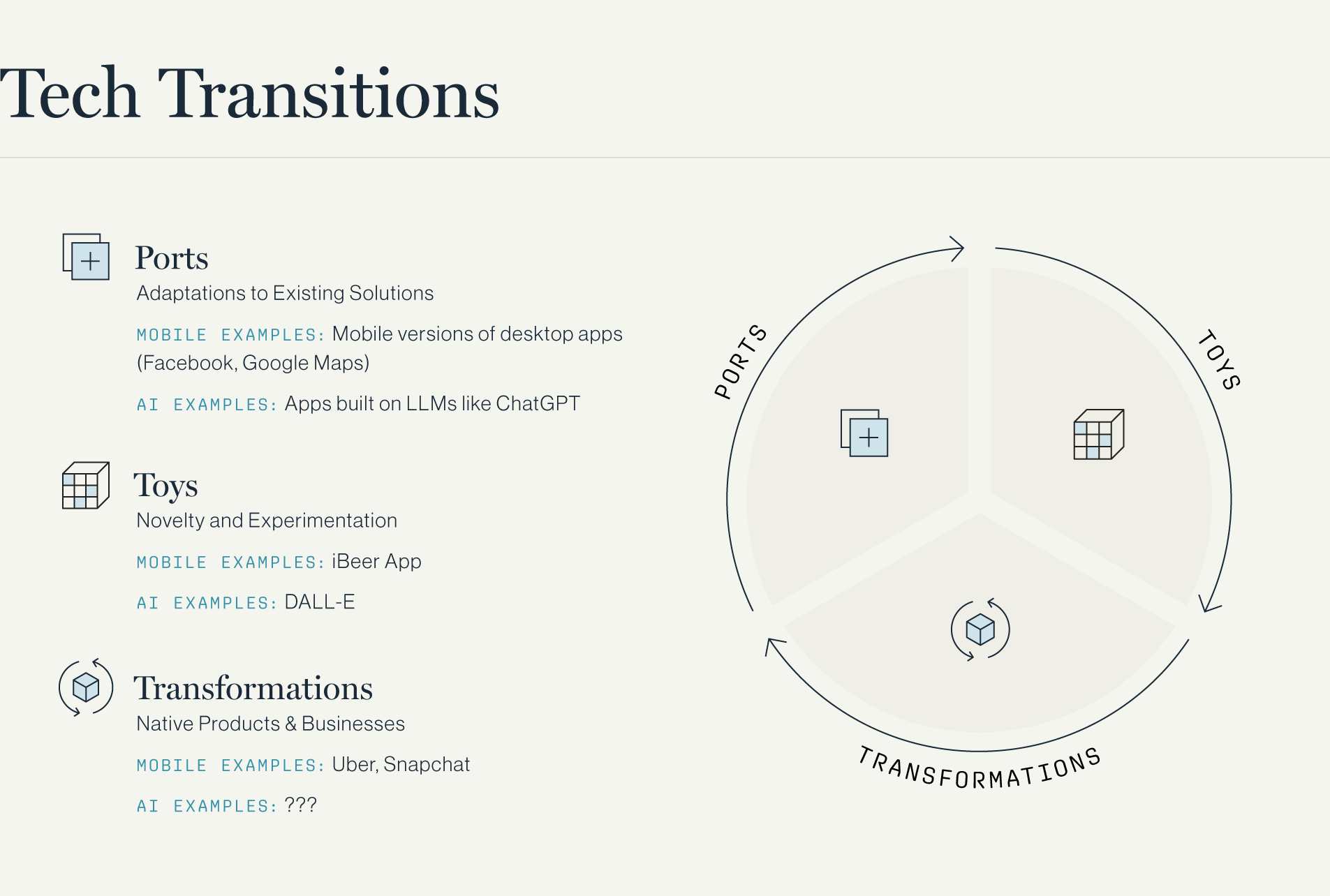

Ports are the initial phase of any tech shift, and generally take the form of marginal adaptations of existing solutions. Ports are typically as simple as fitting an existing product to the new format, but occasionally can significantly enhance a product to the point where it becomes the default tool in its category. During the mobile transition, the first wave of applications to be released on the App Store (typically by incumbents) were ports. Toys, on the other hand, are novel and experimental products. They showcase a new technical possibility and were often “impossible” to create with prior technology. These toys may enjoy a brief period of popularity, but lack long-term utility.
Finally, transformations are solutions created by deeply internalizing new technological capabilities and crafting solutions that address long-standing human needs in unprecedented ways. In mobile, native apps and businesses like Instagram, Snapchat, and Uber emerged and gained popularity several years after the App Store’s launch, utilizing new capabilities like GPS and the camera to create entirely new experiences.
As we examine the current AI revolution, similar patterns are emerging: Ports are all the products adding conversational AI interfaces to their existing platforms, with varying degrees of value. AI toys are also everywhere. Some may disagree, but I believe most text-to-image generative AI tools (like DALL-E) are toys – delivering on novelty for enthusiasts, but not yet durable utility. That said, the mobile transition showed us that in rare cases, products that might be considered toys at one point can sometimes evolve into native products with staying power, but this requires meaningful core utility.
We’re currently at the phase of the AI tech shift where there is still ample opportunity to build the native, transformative products that will define this generation. This last phase is where the most innovative, impactful and enduring products are built. These are the founders I am looking for – they will build the future.
Having previously led product and growth for one of the iconic native apps of the mobile era, I’ve developed a perspective on some of the best (and worst) strategic and tactical decisions companies can make during tech shifts. It starts by asking an important question:
Are you building a novel solution to an enduring need, enabled by new technology?
Using lessons learned from my hands-on experience at Snap (and my observations across other companies) I hope to provide a framework for evaluating your product and company to ensure you are building a transformative product and not a toy. These guidelines are not intended as exhaustive or definitive, but I hope these help founders answer some of the key questions during the various processes of building, designing, testing, and launching your product.

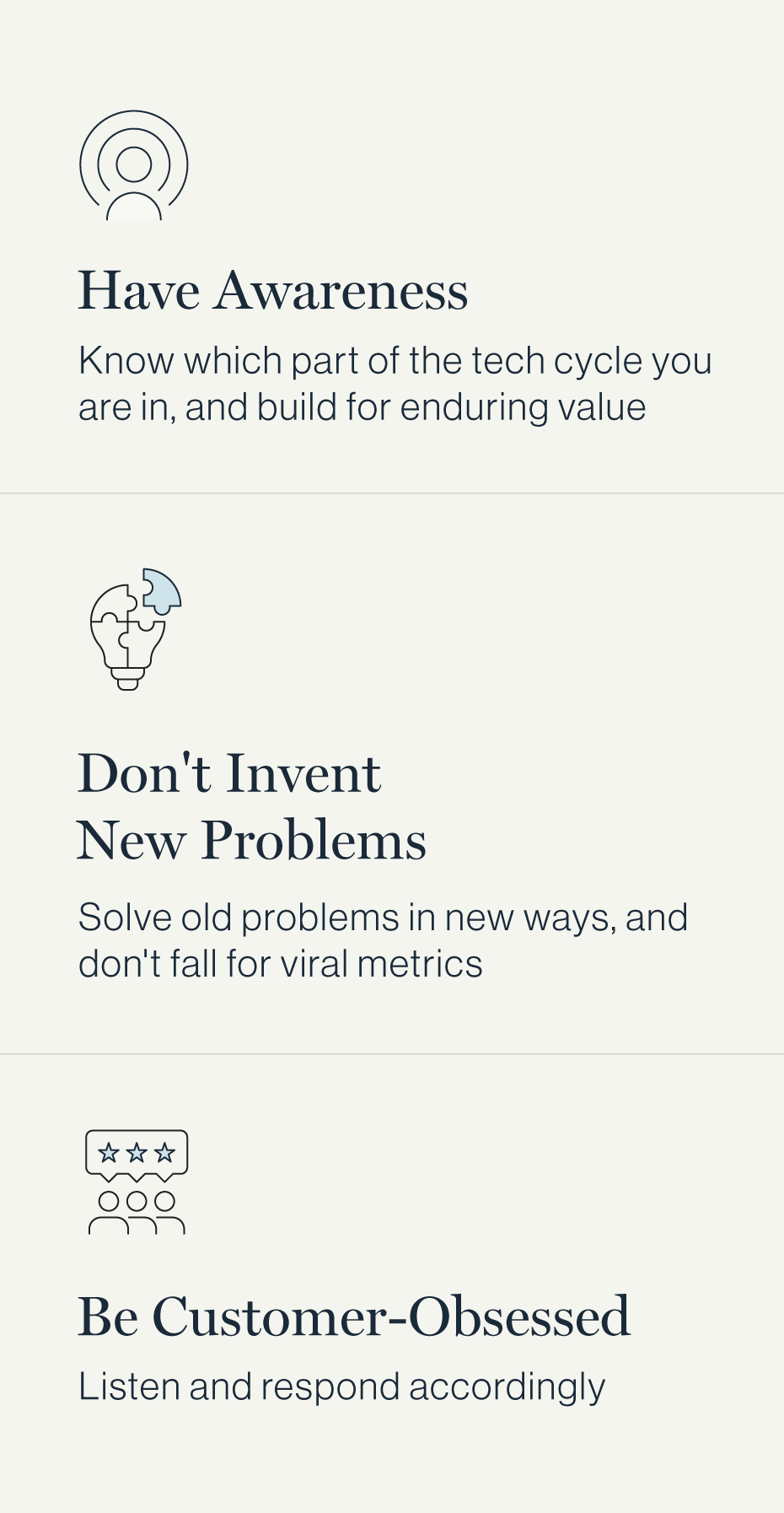
Have Awareness
Understand the realities of a given phase of the cycle and where you stand
In hindsight, it’s usually obvious that a product wasn’t built to live past the earliest phases of a tech shift. But it’s not always so clear when you are actively building.
While my primary focus is on founders building in the transformation phase, I want to first acknowledge that building ports can sometimes be attractive because they very often can achieve considerable success. However, builders should be cognizant of a few critical facts: most ports do not fundamentally change the value humans get from technology, most port products become commoditized, and ultimately, the incumbents with distribution advantages usually win.
Consider the mobile transition. When the App Store launched, most apps were ports or toys. The ports were simple adaptations reformatting existing products to fit the mobile form factor. Even the eventual most popular apps, like the mobile version of Facebook, were shrunk-down replicas of their desktop counterparts. Google Maps, on the other hand, greatly benefited from the port to mobile by leveraging the phone’s GPS sensor and touch screen, ultimately becoming one of the most successful ports of the era. In both cases, however, these companies already had the classic moats of economies of scale, network effects, and brand loyalty.
In AI, ports are the companies strapping GPT to existing solutions. Today, all large companies are focused on “integrating AI” which to most means jamming a chat bot or a conversational interface into their existing product. While it is possible for startups to build ports of existing products, it’s important to remember that established companies have a massive distribution advantage versus insurgents. To stand out, startups must build products with significant differentiation. They must do much more than merely adapting an existing solution to the AI paradigm.The new solutions to old problems are unlikely to resemble the old solutions they displace.
The best startups will build transformations.
Transformative AI products will have elements from the previous phases, such as a novel and magical experience at first use, but they will go a giant step further by using AI to deliver a solution to an enduring human need that is 10x better than anything previously available.
Startups have the advantage in the transformative phase, as incumbents often struggle to innovate at this point in a tech shift due to a host of big-company issues, such as constraints from historical cost structures. However, these inhibitions may be temporary and startups must act quickly to seize the window of opportunity.
When trying to understand the challenge faced by incumbents, Google is a great example. Over the last 20 years, Google has earned distinction as one of the most “perfect” businesses ever built. However, it is currently beset with the innovator’s dilemma, which has in turn opened the door for AI-native startups to build products that essentially unbundle search. We’re seeing real traction from the “answer engine” Perplexity, which has thoughtfully productized and fine-tuned 3rd party and open-source models to build a transformative user experience. The specialized, user-centric nature of Perplexity takes it beyond a mere port, and I believe it is an early example of the wave of AI-native products that will fundamentally change how consumers use the internet.
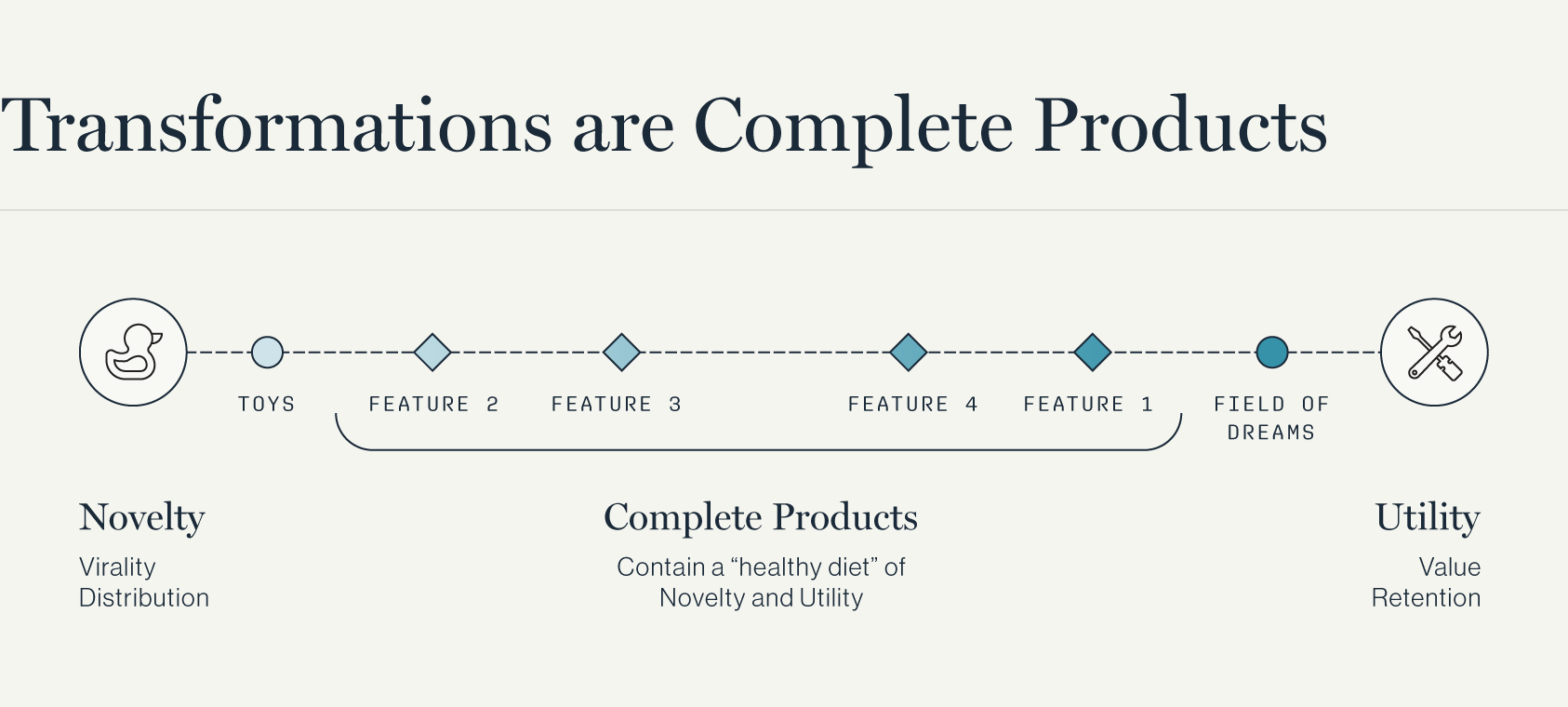
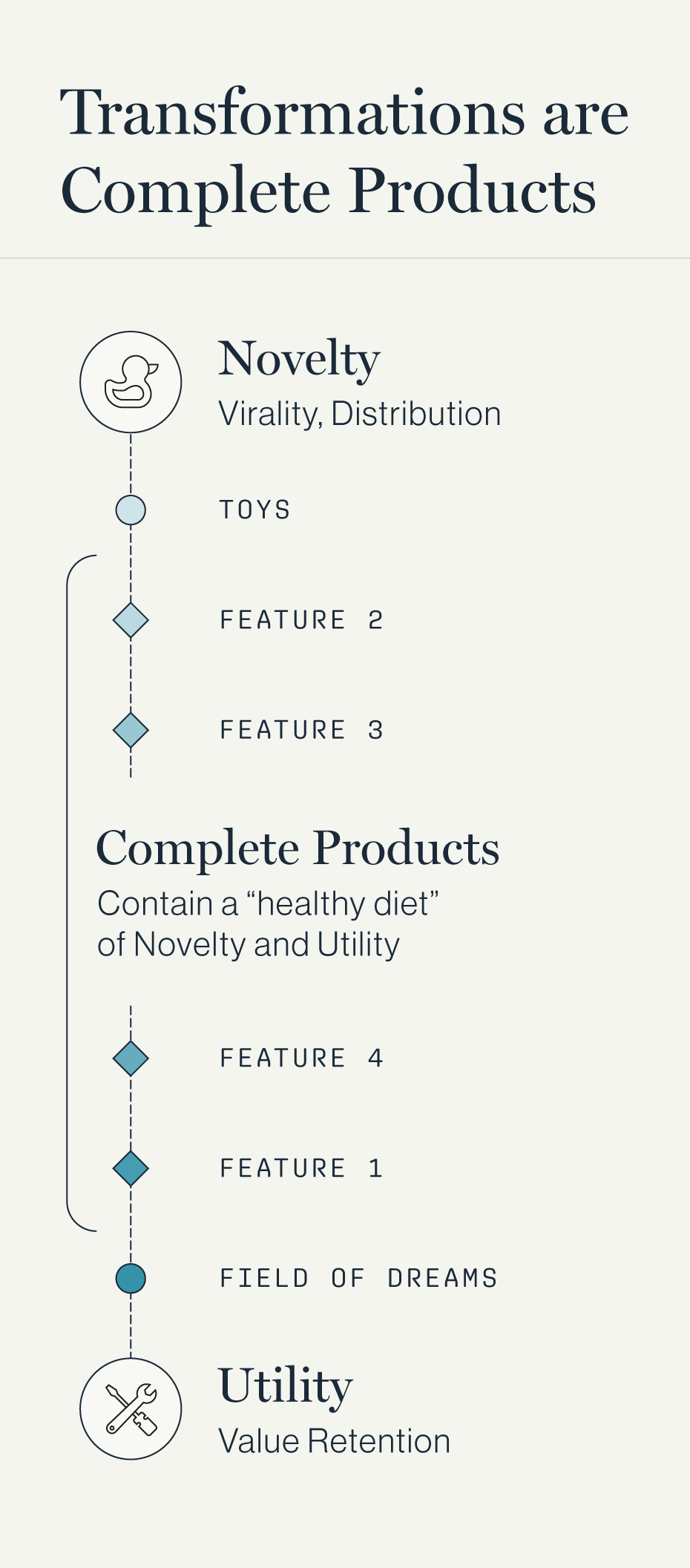
Don’t Invent New Problems
Validate and test your ideas, and don’t fall for viral metrics
If you have already recognized the inherent challenge of finding success with ports, it’s then critical to have an idea of whether what you are building will end up as a toy or an enduring, transformative product. Start by making sure you are building something people actually need and want.Toys over-index on cool and under-index on enduring usefulness. They almost exclusively solve new problems. Unfortunately, the initial user embrace for a toy can be so strong it can be easy to think a real human need is truly being met.
When Snapchat launched in 2011, the App Store had been live for three years and social media incumbents were growing stronger each day. The ephemeral nature of Snapchat was its key differentiator, and was something Evan and Bobby anchored on because of how it enabled the carefree capturing and sending of photos.
But while it was clear that disappearing photos was a neat trick, many wondered if Snap was solving a real problem or if it was just a toy.
We must look deeper into user behavior to answer this question.
Communication is one of the longest standing human needs. After discovering how much more people used their cameras when the content was ephemeral, we saw Snapchatters using their cameras in a totally new way. A picture is worth a thousand words, and for Snapchat users, visual communication became the default. This is a quintessential “new solution” to an “old problem.” Telling a friend what you were up to, used to mean typing out lengthy text messages. Now with a tap and a Snap, users were communicating faster and easier than ever before. This was Snapchat’s durable utility powering its rise as the fastest way to communicate for a whole generation.
There are a lot of toys in AI today. Mind-blowing, impressive products that many of us could never have imagined – some are even generating revenue. Just remember: virality and novelty can unlock distribution and an initial flurry of engagement, but only utility and value can deliver long term revenue and retention.
Just like the eager app-downloaders of the previous era, today’s users are curious and open-minded to new AI tools. The desire to extract tangible value from AI in the form of time or efficiency has made individuals and businesses alike hungry to trial new products at record levels. Don’t mistake these early experimenters for long-term customers.
Sidenote: Some things start as toys. When you have a viral hit on your hands, you’re on the clock, and the long term success of your product will be defined by your ability to graduate your users into long-term durable value – most commonly, a better solution to an old problem.
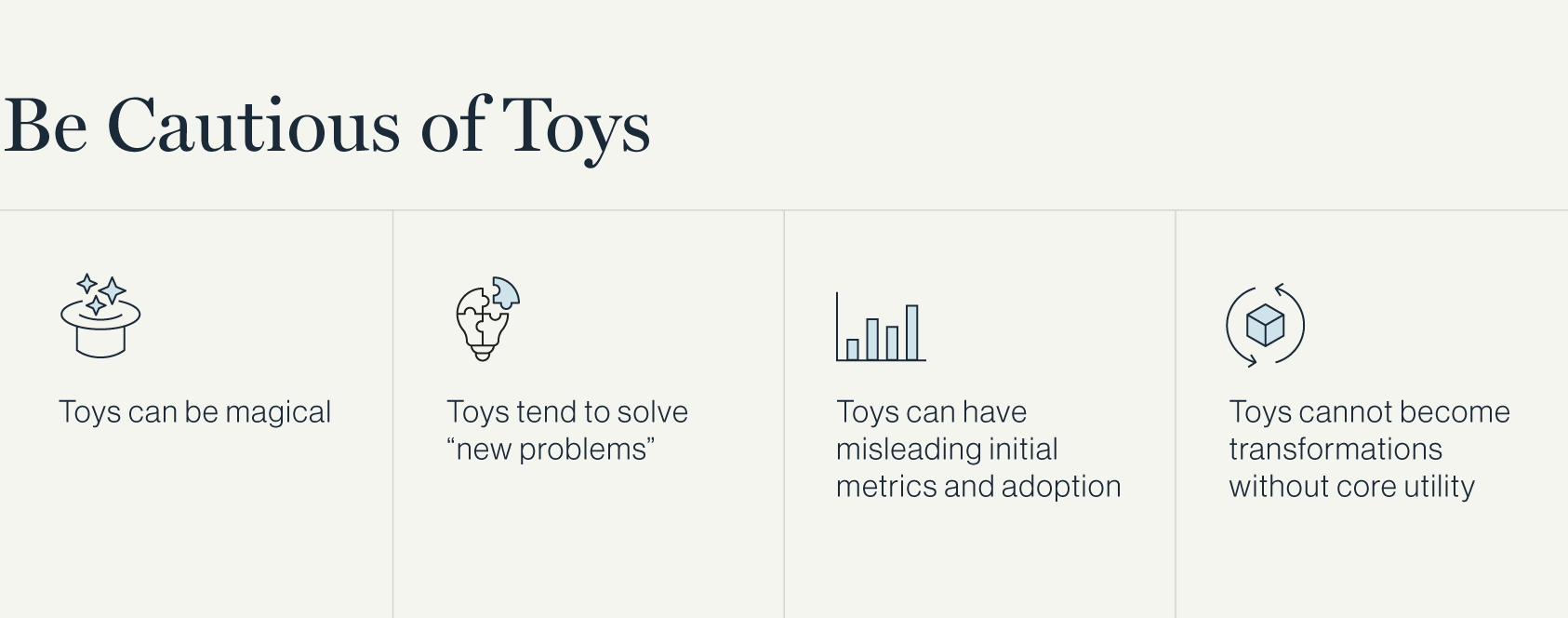
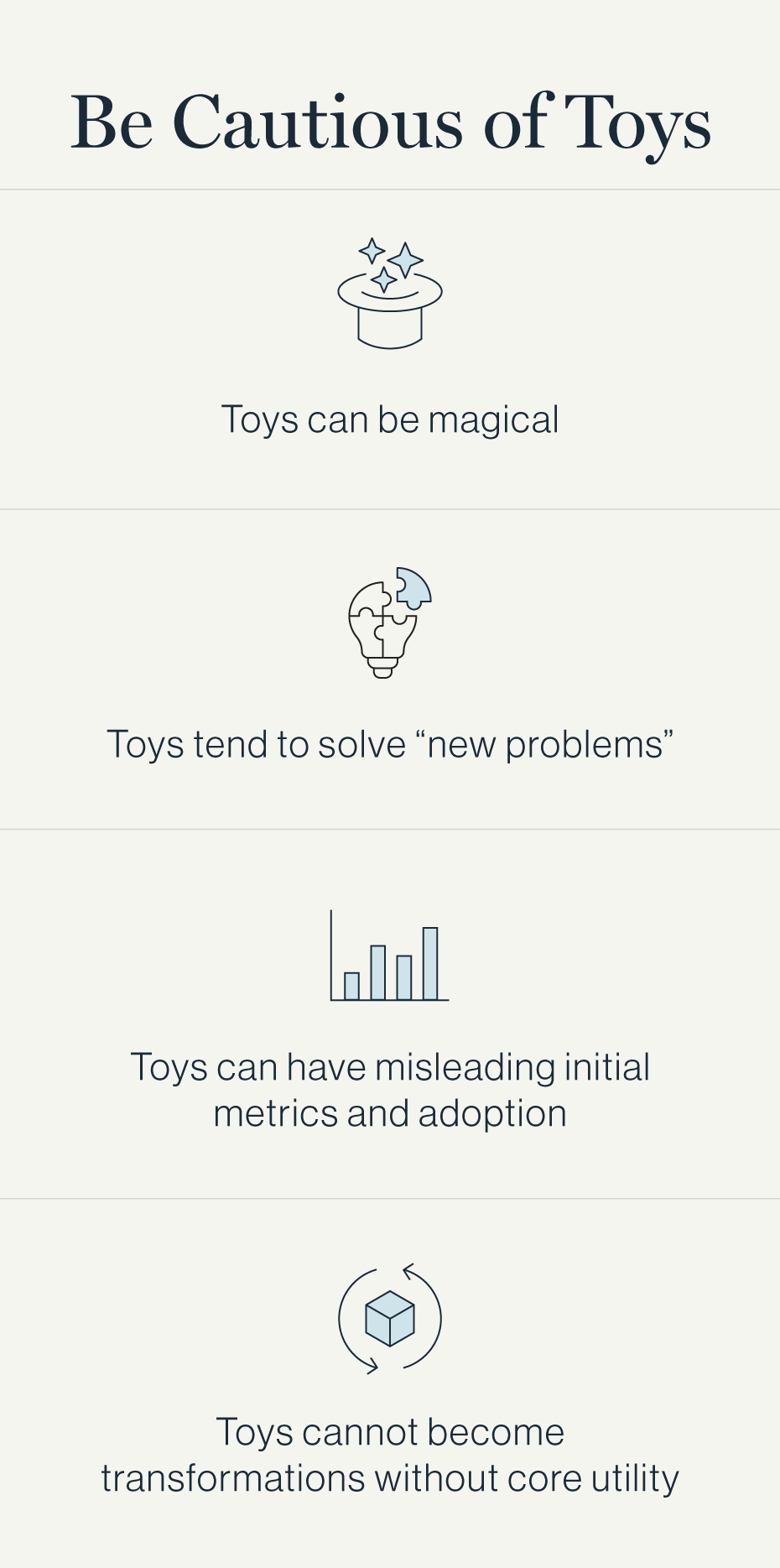
Customer Obsession
Talk to your customers and listen to what they want
In the beginning of the AI wave, we were pitched by teams claiming to be able to accomplish a technical feat that no one else was capable of accomplishing. These are alluring pitches, but the long term trends are not in favor of technical advantage. Technical advantage in AI will likely narrow over time instead of widen. If you are the only person who knows how to do something today, next week 10 people will know, and next year 100,000 people will know.While a technical advantage can give you a head start, you need to treat it just as that – a temporary advantage that must be used to create a sustainable advantage. For most companies, that sustainable advantage will be rooted in customer obsession. Even at scale, there is no alternative to talking to users. If the metrics and the user anecdotes disagree, you’re measuring the wrong thing.
At Snap, one of the biggest barriers to growth was pretty straightforward: the Android app performed poorly compared to iOS. Despite some metrics showing that performance was improving, the complaints continued. Finally we rewrote the Android app to improve performance and it was easily the single most impactful growth “feature” we ever shipped.
Luckily, customer obsession is one area where startups can win against well capitalized foundation model providers like OpenAI. While these foundation model providers will continue to push the state of the research forward across text, photo, and video – their progress is in service of AGI, not customers. This means that despite Sora being an incredible breakthrough, OpenAI is unlikely to produce the tool used by filmmakers globally. The winner in this space may use Sora (or similar) as an underlying model, but the defining characteristics will be in workflow depth and feature specialization and is therefore more likely to be a customer-focused startup.
Conclusion
Understanding these phases is crucial for entrepreneurs and investors in the AI space. The key to success lies in recognizing which phase a technology is in and strategizing accordingly.
To recap, ports can be lucrative, but the eventual commodification of the technology typically means only the incumbents have lasting success. Toys can be fun (and can serve as “training” tools to change human behavior), but they are often abandoned as quickly as they were initially embraced. For startups, the strategic move is to target the final transformative phase of tech cycles.
As we stand at the cusp of the AI revolution, the potential for transformative native AI applications is immense. The challenge and opportunity for today’s founders is to envision and create these groundbreaking solutions that meet enduring human needs while leveraging new technology.
If you are a founder building (or even just thinking about) the AI generation’s native applications, please get in touch with me at jacob@greylock.com.

